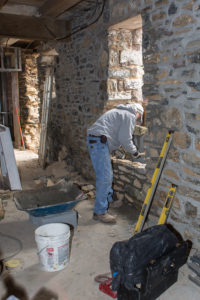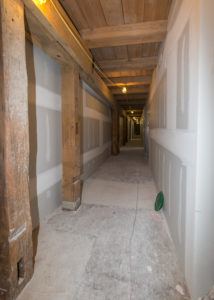Make the Most of Existing Buildings: Adaptive Reuse Architecture & Construction for Medical & Dental Practices
Posted in Medical Construction.
For medical and dental professionals ready to build a new practice, the decision of where to locate must be addressed early in the process. While greenfield construction makes sense in some instances, renovations and adaptive reuse are providing medical and dental practices with access to prime real estate. Determining if adaptive reuse is the right choice for your practice starts by understanding what it is, what the benefits are, and how it can be applied for medical practices.
 What is adaptive reuse?
What is adaptive reuse?
Adaptive reuse projects take existing buildings and renovate and update them to serve a new purpose. The examples of how and where this is occurring are numerous and can range from a single family buying an old church or barn and converting it into a home, to long-shuttered manufacturing plants being converted to co-working office spaces. While traditionally connected to historic buildings, adaptive reuse applies to any instances where the new use of the property is different from the original intent.
What are the benefits of adaptive reuse?
People consider adaptive reuse as an approach for development or redevelopment for many reasons. In many areas, particularly urban settings, prime real estate has already been built upon for years. This leaves new businesses trying to get a foothold in these locations with fewer options. Some companies are able to find existing space that meets their needs with minimal modifications. Others may consider tearing down existing properties, but this is costly and time consuming. Adaptive reuse is providing many businesses with the ability to locate in prime areas both cost-effectively and more quickly than building from the ground up.
In addition to the ability to secure a prime location, adaptive reuse can help to reinvigorate areas that may have been in decline. When applied to historic properties, it can help to maintain the architectural styles of neighborhoods while also conveying a unique style or unusual architectural features that help businesses stand out in patients’ minds.
By many measures, adaptive reuse has a smaller environmental footprint than either tearing down existing properties or starting a new build. Continuing to use the already built space means that building materials will not be sent to landfills or incinerators, and fewer new materials will need to be produced and transported than would be the case for new construction. Adaptive reuse can also be less costly that new construction or the combined costs of demolition and construction.
 Does adaptive reuse make sense for medical and dental practices and facilities?
Does adaptive reuse make sense for medical and dental practices and facilities?
As consumers have moved to more online shopping, more and more retailers have been closing. With the emergence of the coronavirus pandemic and the ensuing mandated closures, this trend has accelerated. Vacancies at malls hit their highest level in 20 years in Q3 of 2020 according to Moody’s Analytics, and Forbes has predicted that the overall retail vacancy rate in the US may hit a seven year high in 2021.
This presents medical and dental practices with an opportunity to access real estate that works very well for their needs. These retail establishments are generally in good locations with ready access from major thoroughfares. They also usually have ample parking and accessibility measures already in place. Retrofitting these open designs can be completed quickly and cost effectively, allowing medical and dental practices to begin serving patients with minimal delay.
Are there special considerations for Adaptive Reuse for medical and dental facilities?
When selecting and qualifying an adaptive reuse property, there are several items that do need to be considered to make sure that you find the right property for your needs. Be sure to work with an experienced professional to make sure that you have considered all of the following during your initial investigative phase.
- Zoning restrictions
- ADA & HiPAA compliance requirements
- Local parking regulations
- Access requirements
- Water & power needs
- Weight/load requirements
- Elevator requirements
- Ability to expand practice in location
- Ceiling height
Building a new medical or dental practice is a significant undertaking and finding the right company to partner with is vital to success. Adaptive reuse projects for medical and dental facilities can produce distinctive offices that delight both patients and staff alike. Real Services has the vision and the experience to help you identify adaptive reuse targets and manage the renovation through to completion. Contact us today to see how we can help you quickly and cost-effectively build your next office as an adaptive reuse project.
